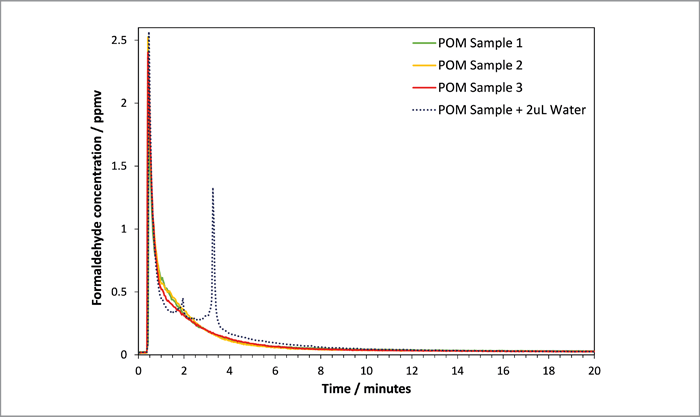This application note introduces the continuous headspace analysis (CHA) technique, which revolutionizes investigation of dynamic processes. By applying direct analysis using selected ion flow tube mass spectrometry (SIFT-MS), continuous, real-time monitoring of volatile emissions from diverse industrial and consumer products is simple.



Emissions of volatile compounds are dynamic – depending on temperature, surface area, humidity, and so on. However, conventional volatile organic compound (VOC) analysis utilizes chromatographic methods, which by nature are slow. Chromatographic techniques are impractical probes of dynamic processes, because they require that multiple grab samples be taken, followed by prolonged preparation and analysis of each sample. SIFT-MS revolutionizes investigations of volatile emissions due to its direct, sensitive, and real-time analysis via soft chemical ionization (see www.syft.com/SIFT-MS). When coupled with automation, samples can be run 24 hours/day, speeding up research and development or QA testing. The data shown here were obtained using a Syft Technologies Voice200ultra SIFT-MS instrument integrated with a GERSTEL Multipurpose Sampler (MPS) (GERSTEL, Mülheim an der Ruhr, Germany) equipped with a GERSTEL purge tool. Samples were analyzed in 20-mL sample vials.
Emissions from polymers
Figure 1 shows replicate analyses of 22-mg samples of polyoxymethylene (POM) polymer pellets at 60 °C over a 20-minute period with 2.7-second time resolution. Under dry purge conditions (zero air), formaldehyde concentrations demonstrate the expected decay. However, prior addition of water (2 µL) to the sample results in a new structure (dotted curve in Figure 1). Since the area under the formaldehyde curves are very similar, the same amount of formaldehyde is being released in each sample. Addition of water hydrates the emitted formaldehyde, which then condenses on the vial walls for a short period before being released in a burst, producing the observed (and repeatable) spike in concentration at 3.25 minutes.





